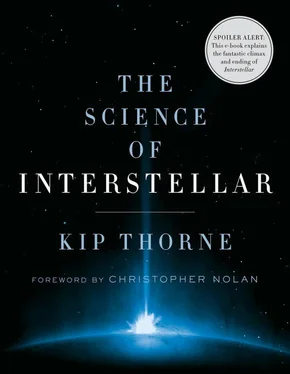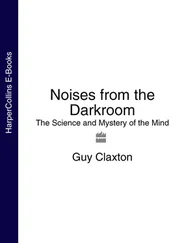Chapter 2. Our Universe in Brief
For an overview of our entire universe with lots of great pictures, and with connections to what you can see in the night sky with your naked eye, binoculars, and telescopes, see Universe: The Definitive Visual Guide (Rees 2005). Many good books have been written about what happened in our universe’s earliest moments, its big-bang origin, and how the big bang may have gotten started. I particularly like The Inflationary Universe (Guth 1997); Big Bang: The Origin of the Universe (Singh 2004); Many Worlds in One: The Search for Other Universes (Vilenkin 2006); The Book of Universes: Exploring the Limits of the Cosmos (Barrow 2011); and Chapters 3, 14, and 16 of From Eternity to Here: The Quest for the Ultimate Theory of Time (Carroll 2011). For current research on the big bang, see the blog by Sean Carroll, Preposterous Universe (Carroll 2014) at http://www.preposterousuniverse.com/blog/.
Chapter 3. The Laws That Control the Universe
Richard Feynman, one of the great physicists of the twentieth century, gave a series of lectures for the general public in 1964 that delved deeply into the nature of the laws that control our universe. He wrote up his lectures in one of my favorite books of all time, The Character of Physical Law (Feynman 1965). For a more detailed, more up-to-date, and much longer book on the same topic, see The Fabric of the Cosmos: Space, Time, and the Texture of Reality (Greene 2004). Easier going, perhaps more fun, and equally deep is The Grand Design (Hawking and Mlodinow 2010).
Chapter 4. Warped Time and Space, and Tidal Gravity
For historical details on Einstein’s concepts of warped time and space, their connection to tidal gravity, and his relativistic laws built on these concepts, see Chapters 1 and 2 of Black Holes & Time Warps: Einstein’s Outrageous Legacy (Thorne 1994); and for a plethora of experiments that show Einstein was right, see Was Einstein Right? Putting General Relativity to the Test (Will 1993). “Subtle Is the Lord…”: The Science and the Life of Albert Einstein (Pais 1982) is a biography of Einstein that focuses in depth on all of Einstein’s contributions to science; it’s much tougher going and much more scholarly than Thorne or Will. There are other, more comprehensive biographies of Einstein—I especially like Einstein: His Life and Universe (Isaacson 2007)—but no other biography treats Einstein’s science with anything approaching the accuracy and detail of Pais.
Gravity from the Ground Up: An Introductory Guide to Gravity and General Relativity (Schutz 2003) is an in-depth discussion of gravity and its roles in our universe (both Newtonian gravity and Einstein’s warped spacetime), written for the general reader. For the same material at the level of an advanced undergraduate physics or engineering student, I like the textbooks by James Hartle, Gravity: An Introduction to Einstein’s General Relativity (Hartle 2003), and by Bernard Schutz, A First Course in General Relativity (Schutz 2009).
Chapter 5. Black Holes
For greater detail on black holes and how we came to know the things we think we know about them, I suggest Gravity’s Fatal Attraction: Black Holes in the Universe (Begelman and Rees 2009), Black Holes & Time Warps (Thorne 1994), and a lecture that I gave in 2012 at Stephen Hawking’s seventieth birthday party: http://www.ctc.cam.ac.uk/hawking70/multimedia_kt.html. Andrea Ghez describes her team’s wonderful discoveries about the black hole at the center of our Milky Way Galaxy in a Ted talk at http://www.ted.com/speakers/andrea_ghezand on her team’s website, http://www.galacticcenter.astro.ucla.edu.
Chapter 6. Gargantua’s Anatomy
For properties of black holes that are featured in this chapter, see Chapter 7 of Black Holes & Time Warps (Thorne 1994), especially pp. 272–295; and at a more technical level, with equations, Gravity: An Introduction to Einstein’s General Relativity (Hartle 2003). Also see the appendix Some Technical Notes in this book. For the shell of fire and the orbits of photons temporarily trapped in it, see Edward Teo’s technical paper (Teo 2003).
Chapter 7. Gravitational Slingshots
For a discussion of gravitational slingshots at a modestly more technical level than mine, I recommend the Wikipedia article http://en.wikipedia.org/wiki/Gravity_assist. But don’t believe what it says about slingshots around black holes. Its statement (as of July 4, 2014) that “if a spacecraft gets close to the Schwarzschild radius [horizon] of a black hole, space becomes so curved that slingshot orbits require more energy to escape than the energy that could be added by the black hole’s motion” is just plain wrong. Indeed, you should always read Wikipedia with some cautious skepticism. In my experience, in areas where I am an expert, roughly 10 percent of Wikipedia’s statements are wrong or misleading.
More reliable than Wikipedia for gravitational slingshots, but less comprehensive, is http://www2.jpl.nasa.gov/basics/grav/primer.php. A gravitational-slingshot video game has been developed in connection with Interstellar ; see Game.InterstellarMovie.com.
For a somewhat technical discussion of the intermediate-mass black holes that I invoke for gravitational slingshots, see Chapter 4 of Black Hole Astrophysics: The Engine Paradigm (Meier 2012).
You can generate and explore complicated orbits around fast-spinning black holes, such as that in Figure 7.6, using a tool written by David Saroff and available at http://demonstrations.wolfram.com/3DKerrBlackHoleOrbits.
Chapter 8. Imaging Gargantua
Simulations of the gravitational lensing of star fields by black holes, similar to those that underlie Interstellar , have been carried out previously by a number of physicists and can be found on the web. Especially impressive are those by Alain Riazuelo; see www2.iap.fr/users/riazuelo/interstellar. See also the section on Chapter 28, below.
Paul Franklin’s team and I plan to write several somewhat technical articles about the simulations that they carried out using the equations I gave them: the simulations underlying Interstellar ’s images of Gargantua and its disk and the wormhole, and additional simulations that have revealed surprising things. You can access these articles on the web at http://arxiv.org/find/gr-qc.
Chapter 9. Disks and Jets
For in-depth discussions of quasars, accretion disks, and jets, see Gravity’s Fatal Attraction (Begelman and Rees 2009), Chapter 9 of Black Holes & Time Warps (Thorne 1994), and at a more technical and more detailed level, Black Hole Astrophysics (Meier 2012). For the tidal disruption of stars by black holes and the resulting accretion disks, see the website of James Guillochon (who, with colleagues, was responsible for the simulations that underlie Figures 9.5 and 9.6): http://astrocrash.net/projects/tidal-disruption-of-stars/. For astrophysically realistic film clips of accretion disks and their jets, I recommend some by Ralf Kaehler (Stanford University) at http://www.slac.stanford.edu/~kaehler/homepage/visualizations/black-holes.html, based on simulations by Jonathan C. McKinney, Alexander Tchekhovskoy, and Roger D. Blandford (McKinney, Tchekhovskoy, and Blandford 2012). For some images of accretion disks with Doppler shifts included as well as gravitational lensing, see the website of the astrophysicist Avery Broderick, http://www.science.uwaterloo.ca/~abroderi/Press/. The simulations that underlie Gargantua’s accretion disk in Interstellar (for example, Figure 9.9) will be described in one or more articles to appear at http://arxiv.org/find/gr-qc.
Читать дальше












